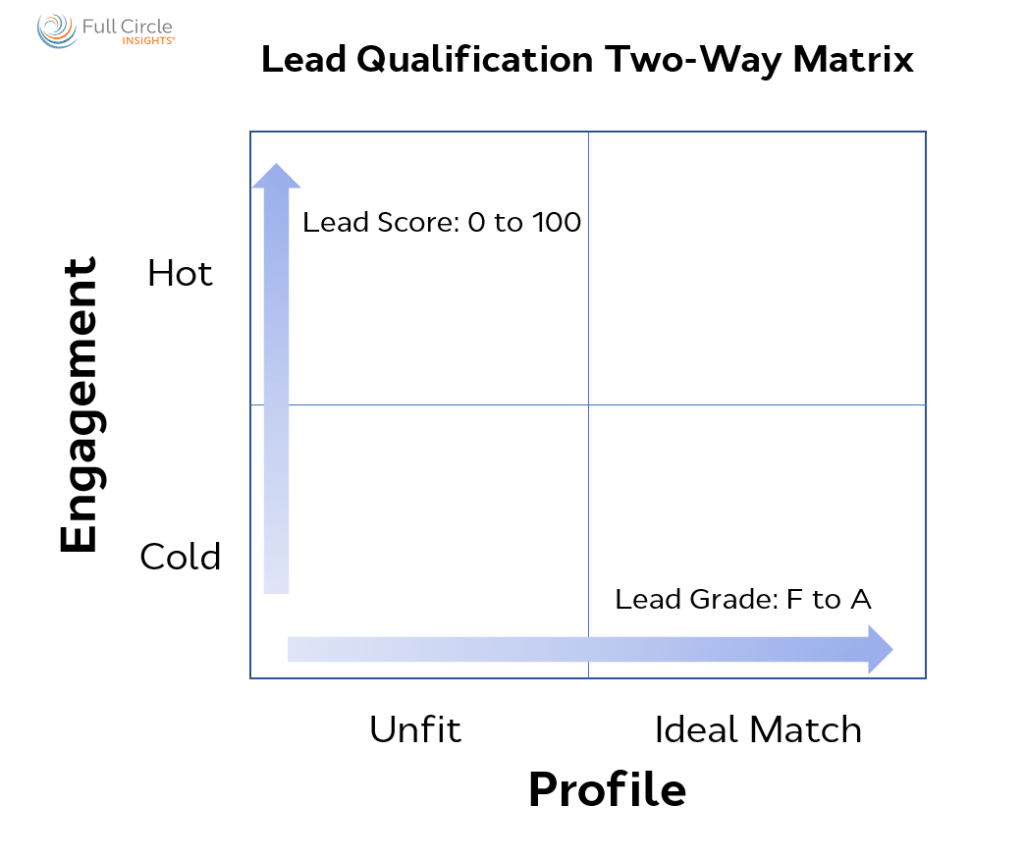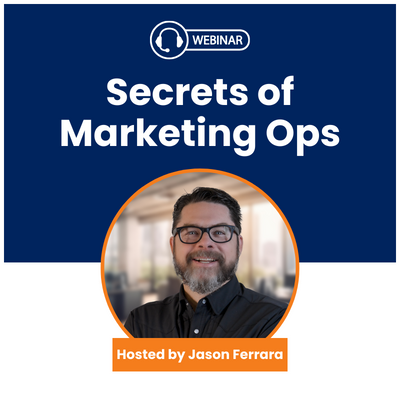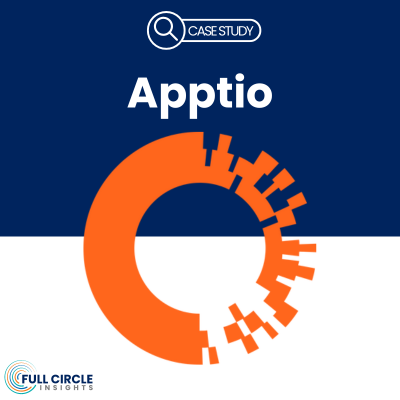Alignment is one of the biggest reasons a sales team loses confidence in marketing. For B2B companies, the chain of events usually unfolds in the following way:
In the end, the misleading metrics and underperformance of the marketing leads “teach” sales that all marketing leads seem worse than they actually are. And in a loop of self-fulfilling prophecy, marketing leads will forever be treated as a bargain bin. Something has to break this loop.
Three Steps to Fix the Vicious Cycle of Bad Marketing Leads
Yes, there is a circuit breaker, and it starts with a stop. As in, stop and restart from the ground up. Here are three steps to fix this cycle:
- Define what a good lead is. With a real system, even if it’s a basic one.
- Establish KPIs to monitor. Figure out a way to honestly assess marketing leads with agreed upon metrics.
- Investigate underperformance and create hypotheses to test. See if you were wrong about your definitions of a good lead, and explore the underlying factors leading to your performance metrics.
1. Define “Good Lead”
What is a good lead? That depends on whom you ask. The key to a good Marketing Qualified Lead, or MQL is the “Q.” The challenge of qualification, however, is establishing the right criteria for qualification. I won’t get into a full lead qualification guide, but one standard way of qualifying leads is via two dimensions: Engagement and Profile. See a simple two-way matrix below.

Engagement is based on lead activity, classifying a lead as cold or hot based on level and quality of activity (e.g., content downloads, event attendance, demo requests, etc.). In marketing automation or CRM, this is usually represented by a lead score, maybe 0 to 100.
Profile relates to the attractiveness of the buyer or account based on characteristics (e.g., company size, industry, techno-graphics, etc.). In marketing automation or CRM, this can be represented by a lead grade, maybe F being lowest, to A being highest.
Marketing and Sales need to align on what activities signal hot leads and what profiles indicate ideal fit. That way, you can establish what types of leads are worthy of passing to sales. Perhaps an F-grade leads require a high level of engagement before marketing passes them as MQLs, and maybe A-grade leads require much lower levels. See below for a common (though extreme) example.

Again, this is a topic that gets into more advanced systems of qualification, but the principle is simple. With a unified view of a “good lead” in place, marketing’s MQLs passed to sales will convert to “Accepted” (Sales Accepted Leads, or SALs) at a much higher rate, and pursued by sales reps with greater enthusiasm and confidence to close.
2. Establish KPIs, Particularly Conversion Metrics
Establish the KPIs that will help you stay honest about the effectiveness of your lead qualification and the validity of your definition of a “good lead”. I suggest you track the following key metrics:
- Volume of MQLs
- Conversion rate of MQLs to SALs (also known as the lead acceptance rate)
- Conversion rate of MQLs to Demos
- Conversion rate of SALs to SQLs (Sales Qualified Leads)
- Conversion rate of MQLs to Closed-Won Deals
- Pipeline amount generated by MQLs
After a period of running your lead qualification program (which has been signed off on by both marketing and sales), you should report on the performance of these new marketing qualified leads, using the above examples. With these reports, you can evaluate MQL quality in terms of “pursuit-worthiness”. As a final evaluation of your new lead qualification program, you can check the compare the velocity and total number of closed-won deals in this time period versus the prior time period without the new lead qualification program. Assuming enough time has passed for this program, did your marketing team generate more revenue with this program or not?
To accurately and comprehensively report the above performance metrics, you can leverage technology solution to track lead progression through every stage of your funnel pre-Opportunity and post-Opportunity in Salesforce. This comes in handy for reporting granular funnel stage performance, and it’s what Full Circle Response Management enables in Salesforce.
3. Investigate for Truth and Test Hypotheses
So with the reports, let’s say that you see some underperformance. Does that mean marketing leads under this qualification program are still bad? Perhaps, but the correct answer requires investigation before generating conclusions. For deeper diagnosis, investigate in the following areas:
- Profile data accuracy (were leads graded based on accurate profile data fields? Do you need a different data vendor?)
- MQL follow-up response time by sales reps (perhaps the follow-up is too slow, dampening conversion rates)
- Conversion rates segmented by profile characteristics, such as industry, employee count, etc. (is your definition of Ideal Customer Profile wrong? Do you need to tweak any profile characteristics of your target? Different industry or size?)
Iterate on your lead qualification program by ensuring accurate data, shoring up areas of funnel breakdown, and redefining the Ideal Customer Profile. Then, re-evaluate and hone in on the factors of true quality leads.
Maintain Alignment Between Marketing and Sales with Ongoing Pow-Wows
At the end of the day, sales and marketing professionals are human. And so, pre-existing attitudes towards marketing leads will come from past experience or even misleading metrics. It’s hard to change attitudes, but the first step is establishing good habits. The above three steps should be repeated and practiced, with weekly meetings to ingrain these habits and maintain the discipline of marketing and sales alignment. Any course correction can be made on the fly at these meetings if goals are aligned, data is reliable, and minds remain open to new insights backed by data.
Many Full Circle Insights customers drive real actions from metrics reporting referenced above. Learn more about how they do that and achieve success. Request a chat and see this all in action at your convenience.




